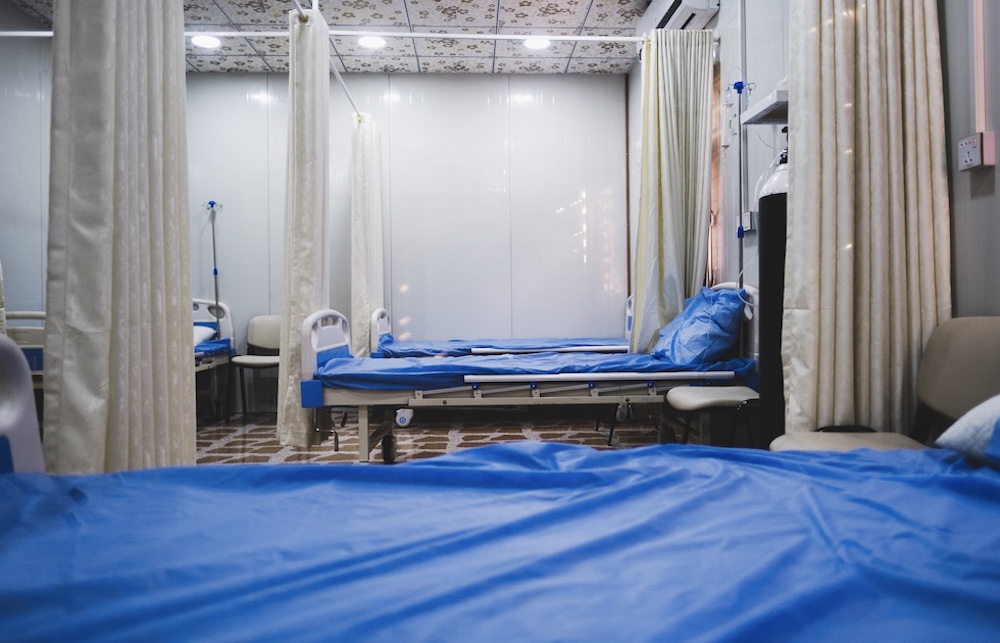More Healthcare Simulation Center Virtual Tours
Exploring clinical simulation centers can be a source of awareness and inspiration! As more healthcare simulation centers are designed and built, many leaders are facilitating virtual tours to share insights into their spaces. To provide readers with a glimpse into these clinical education spaces, HealthySimulation.com has compiled several clinical simulation center virtual tours. Each of these tours features different rooms, features, and uses of a clinical simulation center. This article also provides background on these spaces and the various elements that make them unique.
UA CCN Clinical Practice Lab & Simulation Center for Clinical Excellence: The clinical simulation laboratory provides students with the opportunity to develop clinical judgment through high-fidelity patient simulators. Learners are provided simulation-based educational experiences as early as the first semester of upper-division. Learners advance from basic assessment of the adult patient in first semester courses to comprehensively applying their clinical judgment and knowledge in advanced fifth-semester learning experiences.
East Carolina University Brody Clinical Simulation Lab: The Brody School of Medicine promotes excellence in clinical care through the application of safe, high-quality, simulation-based education. Trainees are provided faculty-guided instruction through the use of a variety of simulation modalities such as computer programs, virtual reality simulators, innovative models, procedural task trainers, life-sized, computer-enhanced patient simulators, simulated patients, and a self-directed learning component.
Sponsored Content:
UND Clinical Resource & Simulation Center: UND Nursing & Professional Disciplines offers learners a unique hands-on learning experience. The Clinical Resource & Simulation Center has 14 full-body clinical simulators for students to practice and enhance their nursing skills before they graduate. The simulators include three high fidelity (very realistic) adults (one birthing with infants), a high fidelity child, a high fidelity infant, and other moderate fidelity simulators. Training on these simulators with the supervision of clinically trained faculty and staff allows learners to get the experience needed to be prepared for their clinical work.
Cabrini University’s Nursing Clinical Simulation Center: Cabrini University’s Clinical Simulation Center (CSC) provides a state-of-the-art facility and hands-on learning environment for the Nursing program, guided by faculty demonstration and partnered practice. And, unlike many other Nursing programs in the area, Cabrini Nursing majors spend time in the lab during their first year. Housed in the Antoinette Iadarola Center for Science, Education, and Technology, the CSC contains a Clinical Skills Laboratory and two High-Fidelity Simulation Suites. Each suite has a conjoining debriefing and observation room where learners and faculty engage in meaningful discussion optimizing learning while in small, personal class size.
National Surgical and Clinical Skills Centre: The National Surgical and Clinical Skills Centre at the Royal College of Surgeons in Ireland has top floors that house a state-of-the-art surgical and clinical training suite. Managed by the RCSI SIM team, within this area learners can find a flexible wet lab, a mock operating theatre, clinical training wards, standardized patients’ rooms, and task training rooms. For professionals and learners who want to acquire knowledge, develop or practice the latest surgical techniques, you can do it within the center’s fully-functioning operating theatre, control room, and debrief room. The theater is equipped with the latest laparoscopic equipment and has multi-angle cameras to assist in teaching even the most precise skills.
The University of Scranton Nursing Lab: This nursing simulation lab allow nursing learners to practice emergency protocol safely and in a controlled environment. Additionally, the clinical simulation equipment permits them to make life-or-death decisions that they may be required to make in the field without the risk to a real patient in a clinical rotation, resulting in more confident, successful professionals. For example the University acquired Newborn Tory S2210, an advanced newborn patient simulator; Pediatric Hal S3005, a five-year-old pediatric simulator; and a Simcart Rx, a simulation medication dispensing system.
Sponsored Content:
Miami Dade College Simulation Center: The Clinical Simulation Lab allows learners to practice their skills independently, but also bolsters a key principle of our program: creating an environment of multidisciplinary collaboration by bringing together students from various fields to work and communicate as a team. Ultimately, the Clinical Simulation Lab prepares learners with the evidence-based principles and clinical skills they will need in clinical environments in the real world, helping them reduce errors, improve safety, and elevate the quality of patient care. This Clinical Simulation Lab has open lab hours in which learners can practice and hone their skills individually or in groups, with real-world scenarios often found in healthcare.
Viterbo University Clinical Simulation Learning Center: The Viterbo School of Nursing’s Clinical Simulation Learning Center has state-of-the-art simulation technology to prepare future nurses to provide safe, competent, high-quality patient care and apply critical-thinking skills through true-to-life clinical events. The center is equipped with technology and equipment to operate clinical simulations from a control room, allowing faculty and staff to conduct the simulation behind a one-way mirror, which ensures the clinical simulation is conducted in a realistic manner. The center is located on the third floor of the School of Nursing building.
University of Jamestown Nursing Simulation Lab: UJ nursing learners come to the clinical simulation lab throughout every semester to learn and test their skills and prepare for their careers. Their simulated patients can show signs of many conditions, including diabetes, concussions, cardiac emergencies, traumatic wounds, and more.
Learn More About Simulation Centers
Lance Baily, BA, EMT-B, is the Founder & CEO of HealthySimulation.com, which he started while serving as the Director of the Nevada System of Higher Education’s Clinical Simulation Center of Las Vegas back in 2010. Lance is also the Founder and acting Advisor to the Board of SimGHOSTS.org, the world’s only non-profit organization dedicated to supporting professionals operating healthcare simulation technologies. His co-edited Book: “Comprehensive Healthcare Simulation: Operations, Technology, and Innovative Practice” is cited as a key source for professional certification in the industry. Lance’s background also includes serving as a Simulation Technology Specialist for the LA Community College District, EMS fire fighting, Hollywood movie production, rescue diving, and global travel. He and his wife Abigail Baily, PhD live in Las Vegas, Nevada with their two amazing daughters.
Sponsored Content:


















